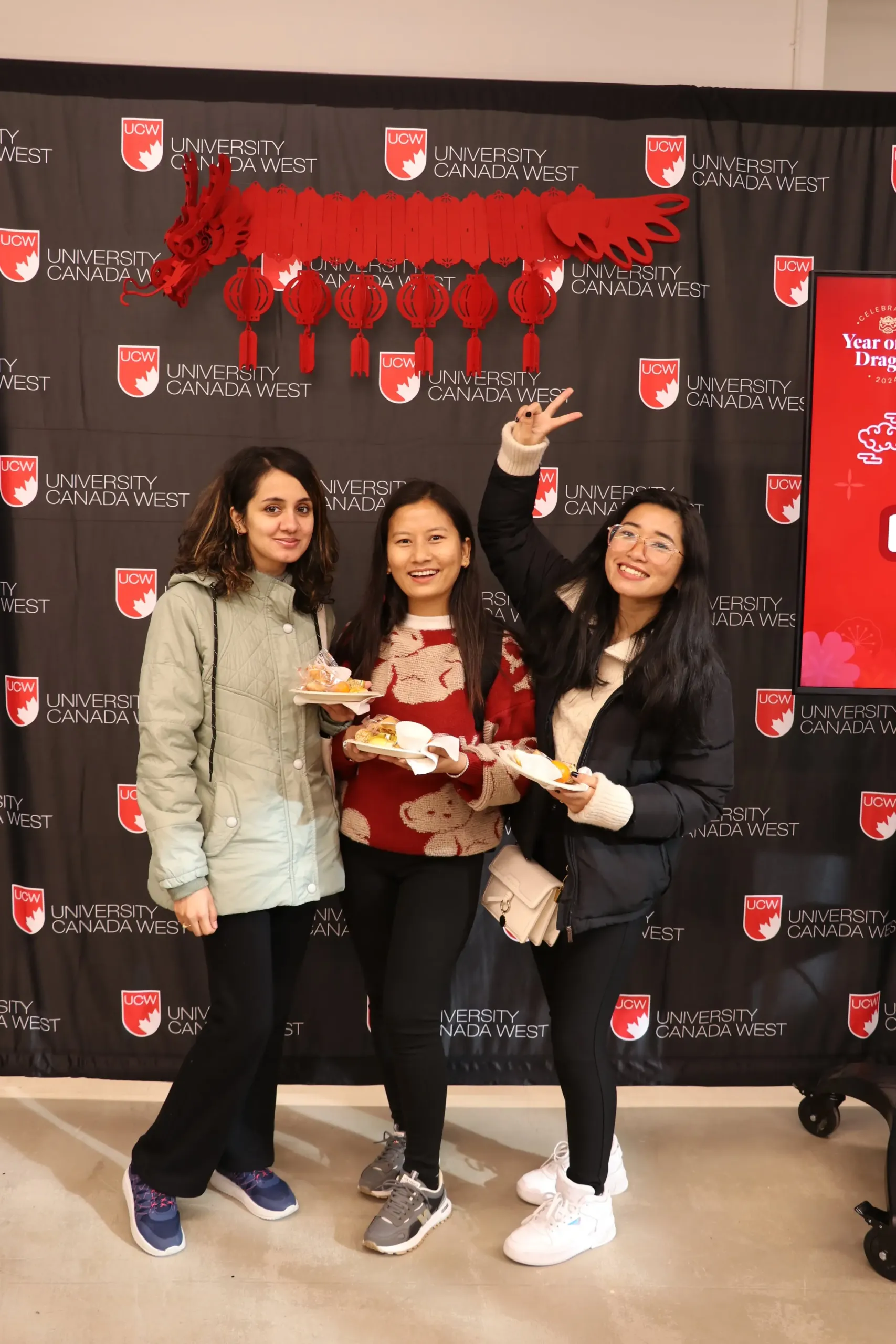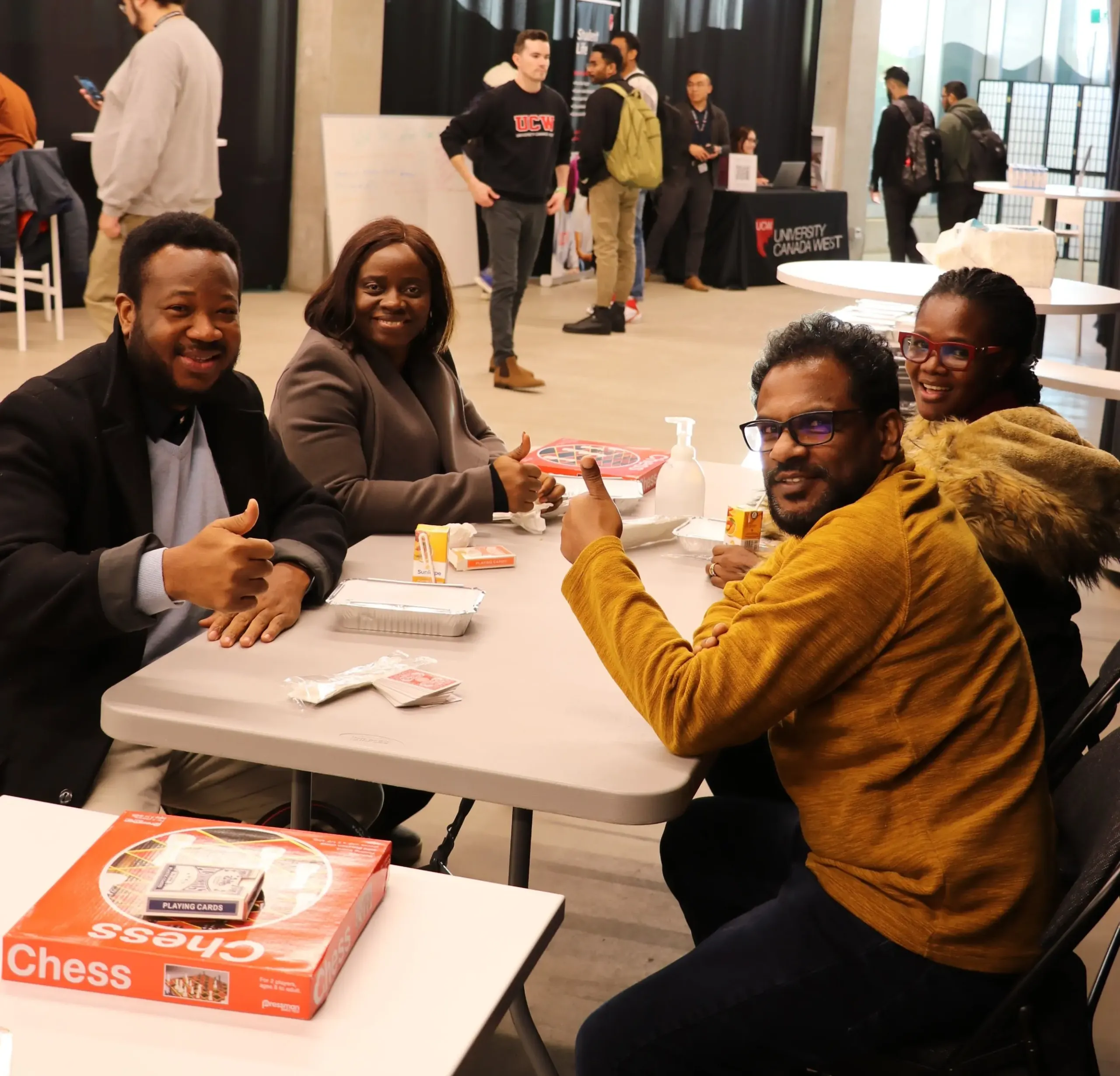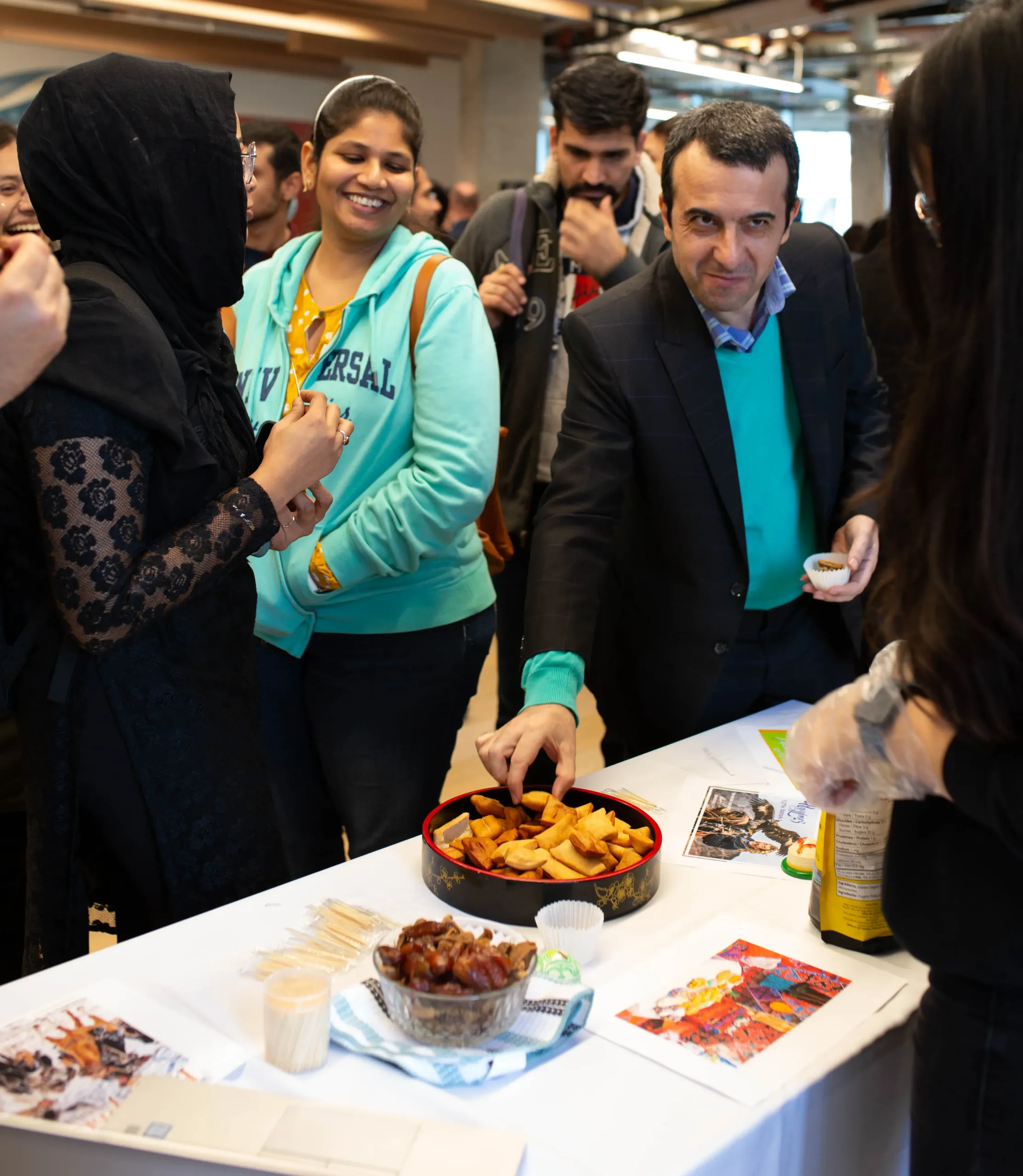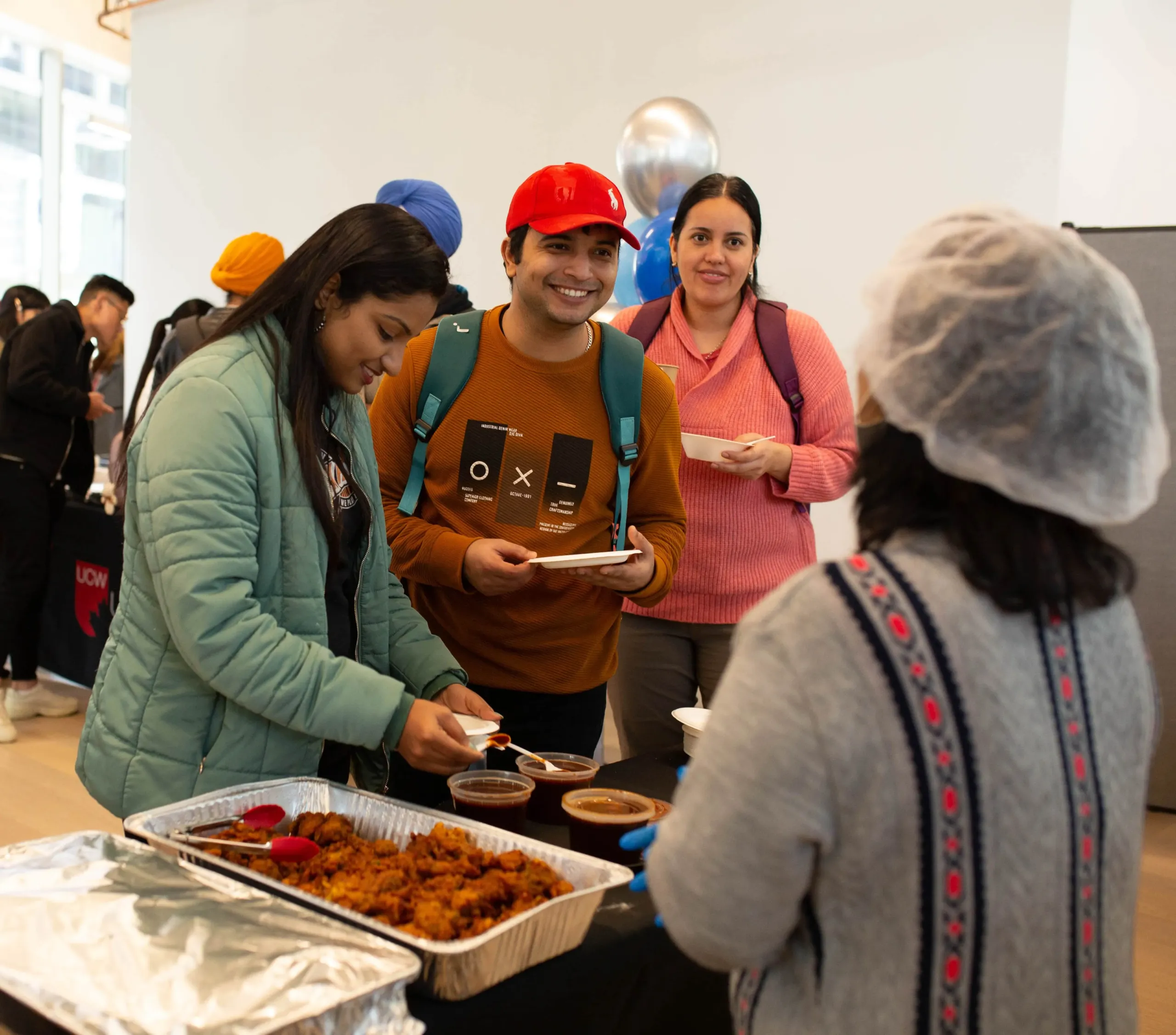University Canada West is a global melting pot of diversity, boasting a vibrant student body representing a staggering 110 different countries. This remarkable amalgamation of cultures enriches the campus environment, fostering a dynamic and inclusive atmosphere that extends beyond the classroom.
One of the hallmarks of UCW’s commitment to cultural appreciation is its dedication to celebrating the unique heritages and traditions that each student brings to the table.
In recognition of this diverse tapestry, University Canada West takes proactive measures to honour and showcase the rich mosaic of cultures present on campus. One of the ways it achieves this is through the organization of special cultural events. These events serve as platforms for students to share the essence of their homelands, offering a taste of their native cuisine, traditional music, dance and customs. By engaging in these celebrations, students have the opportunity to not only take pride in their heritage, but also to foster cross-cultural understanding among their peers.
The cultural events at UCW play a crucial role in creating a sense of unity among the international student community while simultaneously promoting a global perspective among all attendees. These celebrations provide a unique opportunity for students to break down cultural barriers, build lasting connections and develop a more profound appreciation for the diverse world they are preparing to navigate.
Ultimately, University Canada West’s commitment to embracing and celebrating cultural differences contributes to the development of well-rounded, globally aware individuals ready to thrive in an interconnected world.
Some cultural events held over the past year include Viva Latino Vancouver, Indigenous Diwali and Christmas. With the advent of various new years, we take a look at some of the ongoing and upcoming cultural events around UCW.
Lunar New Year

The Year of the Wood Dragon kicked off on February 10. Celebrations typically begin on the eve of the Chinese New Year and extend for about 15 days, culminating in the Lantern Festival. Families come together for a reunion dinner on the eve, sharing a lavish meal symbolizing prosperity and unity.
Traditional dishes are carefully chosen for their symbolic meanings, such as longevity, wealth and good fortune. Some common food items associated with Chinese New Year include dumplings, spring rolls, fish dishes, long noodles and sticky rice cake.
University Canada West celebrated the Lunar New Year by hosting a lion’s dance on campus as well as a visit by some students to Dr. Sun Yat-Sen Classical Gardens.
Chinese New Year is also marked by vibrant parades, dragon and lion dances, the giving and receiving of red envelopes (hongbao) containing money for good luck, and the lighting of fireworks to ward off evil spirits. Overall, the celebration is a time for family reunions, expressing good wishes and ushering in the new year with joy and optimism.
Black History Month

UCW is celebrating Black History Month throughout the month of February with a series of events.
On February 13, Student Life hosted a gathering to celebrate Black culture with delicious Caribbean-vegan food catered by Calabash Bistro. Examples of Caribbean food include jerk chicken, goat stew and ackee fruit and saltfish. Speaking of food, there was also a presentation from Asha Wheeldon, founder of Afro-Vegan meal kit business KULA Foods, on February 7 on campus.
Nowruz

Nowruz, which means “new day” in Farsi, is an ancient festival that celebrates the first day of spring. It is based on the Iranian Solar Hijri calendar and is rooted in the traditions of Zoroastrianism. Nowruz marks the beginning of the new year and is celebrated in countries with significant Persian cultural influence, including Iran, Afghanistan, Azerbaijan, India, Kazakhstan, Kyrgyzstan, Pakistan, Tajikistan, Türkiye, Turkmenistan and Uzbekistan.
Some of the key food traditions associated with Nowruz include sabzi polo mahi, an aromatic herb rice served with fish, symbolizing life and the beginning of a new year; the delicious kuku sabzi, an herb frittata-like dish made with a mixture of eggs, fenugreek, parsley and other herbs; an abundance of fresh vegetables and herbs, such as radishes and spring onions as well as a variety of nuts and fruits; and sweets and desserts, including naan nokhodchi (saffron and chickpea cookies), sohan assali (honey brittle with pistachios) and naan-e berenji (rice cookies).
These dishes are not only delicious but also carry symbolic meanings related to the themes of rebirth, renewal and the arrival of spring.
UCW’s Community Engagement team will be hosting a special Nowruz event in March, with more information to be shared shortly.
Holi

This ancient Hindu festival is also known as the “Festival of Colours” because of the use of colours that encompass the festival’s spirit. It marks the onset of spring and is celebrated as the last full moon day of winter. It is a joyous occasion that brings people together to enjoy the abundance of spring’s colours and say farewell to winter. The festival has also become popular outside India, with communities around the world organizing Holi events to celebrate and stay connected to their cultural heritage.
Holi celebrations involve a variety of traditional foods and drinks. Some of the popular food items enjoyed during Holi include gujiya, thandai, lassi, rasmalai, malpua, barfi, badam phirni, dahi bhalla and dahi vada. These dishes are an integral part of the Holi festivities and are enjoyed as a part of the celebration of the arrival of spring and the triumph of good over evil. The traditional Holi foods vary by region, but gujiya, a delicious sweet dumpling, is a common delicacy enjoyed.
UCW’s Community Engagement team will be hosting a special Holi event in March, with more information to be shared shortly.
Published on February 16, 2024.






